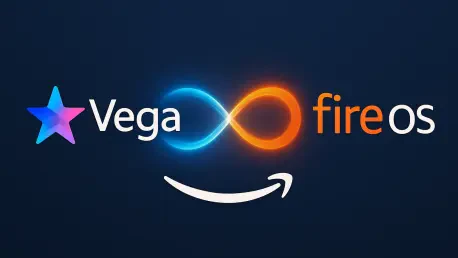In an era where streaming devices are becoming increasingly central to home entertainment, Amazon has taken a bold step by adopting a dual-operating system approach that could redefine how consumers interact with technology. This strategic move involves balancing the long-established Android-based Fire OS with the newly introduced Vega OS, a platform designed specifically for low-power, budget-friendly devices. As the streaming market grows more competitive, Amazon’s decision to diversify its technological foundation showcases a forward-thinking mindset aimed at addressing varied hardware needs and consumer price points. By embracing two distinct systems, the company is not only ensuring compatibility and performance across its Fire TV lineup but also positioning itself to innovate independently in a landscape often dominated by external platforms. This development raises intriguing questions about how such a strategy might shape the future of consumer electronics and streaming experiences.
Exploring the Dual-OS Framework
Balancing Android Roots with New Horizons
Amazon’s commitment to maintaining Fire OS, which is built on Android, while simultaneously rolling out Vega OS reflects a nuanced approach to meeting diverse market demands. Fire OS has long been a cornerstone of the Fire TV ecosystem, offering familiarity to users and developers alike through its Android foundation. This ensures seamless integration with a vast array of apps and services, a critical factor for devices targeting mainstream audiences. Meanwhile, Vega OS, introduced recently, targets a different segment by optimizing performance on low-end hardware. Designed for extremely low-power systems, it leverages cloud streaming for non-native apps, allowing even the most basic devices to deliver smooth functionality. This balance enables Amazon to cater to a wide spectrum of consumers, from those seeking affordable options to others using more robust hardware, without sacrificing user experience or compatibility across its product range.
Strategic Flexibility for Diverse Hardware Needs
The dual-OS framework provides Amazon with significant strategic flexibility, allowing the company to address a broad range of hardware capabilities and price points within its Fire TV lineup. Vega OS, for instance, powers devices like the Fire TV Stick 4K Select, which targets budget-conscious buyers with competitive pricing. By focusing on low-memory systems, this platform ensures that even minimal hardware can support modern streaming demands through efficient cloud-based solutions. On the other hand, Android-based Fire OS remains a reliable choice for devices requiring more complex functionalities, potentially including advanced AI integrations like Alexa+. This multi-OS approach not only broadens Amazon’s market reach but also serves as a safeguard against over-reliance on a single external ecosystem. Such adaptability highlights a deliberate effort to tailor technology to specific use cases, ensuring that both entry-level and premium devices deliver value to their respective audiences.
Future Implications of a Multi-OS Approach
Vega OS as a Foundation for Innovation
Looking ahead, Vega OS could play a pivotal role in Amazon’s broader vision for consumer electronics, particularly as it pertains to low-power and behind-the-scenes flexibility in products like Echo devices. While currently focused on resource-constrained hardware, the platform’s lightweight architecture and cloud-centric design offer potential for expansion into other areas of innovation. This modern, faster alternative to traditional systems might eventually support more advanced features or even scale to higher-end devices, depending on how Amazon chooses to evolve its capabilities. Official statements have emphasized that Fire OS is not being phased out, suggesting a long-term coexistence of both systems. This duality allows the company to experiment with Vega OS as a testing ground for new ideas while maintaining the stability and compatibility of Android for its core user base, setting a precedent for how multi-OS strategies can drive technological progress.
Reducing Dependency and Enhancing Control
Another critical aspect of Amazon’s dual-OS strategy lies in its potential to reduce dependency on external platforms, thereby granting greater control over its tech stack. Industry insights suggest that Vega OS acts as an insurance policy against reliance on Google’s Android ecosystem, a move that could empower Amazon to innovate on its own terms. This shift is particularly significant in a competitive market where differentiation is key to maintaining an edge. By diversifying its operating systems, Amazon can customize user experiences more effectively, tailoring software to hardware in ways that align with specific consumer needs. This approach not only enhances operational independence but also positions the company to respond swiftly to emerging trends, whether in AI, streaming, or other domains. Reflecting on this strategy, it’s clear that Amazon has carefully balanced immediate market needs with long-term aspirations, laying a robust foundation for future advancements in its device ecosystem.









